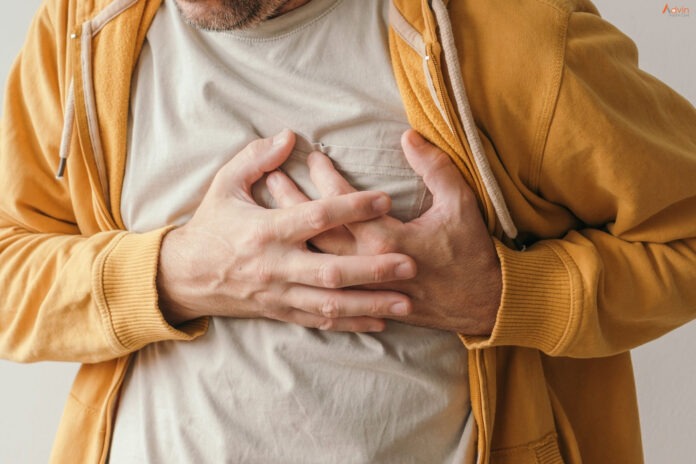Cardiovascular disease is a leading cause of global mortality accounting for around 17 million deaths, or nearly 30 percent of all global mortality. It is estimated that about 40–50 percent of all cardiovascular deaths are the result of sudden cardiac deaths that occur when the heart suddenly stops beating and the flow of blood pumped throughout the body is stopped. Nearly 80 percent of all cardiac arrests are due to an arrhythmia, or abnormal heartbeat, which occurs when the electrical pulses telling the heart to pump blood are disrupted.
The survival rate from sudden cardiac arrest is less than 1 percent worldwide.
Although there are some known signs and symptoms of sudden cardiac arrest, most of the time it occurs without any warning. Researchers at Cedars-Sinai Medical Center in the United States have found that half of people experiencing a sudden cardiac arrest also had a telling symptom 24 hours beforehand, but they tend to be ignored. They also found that these warning signs are usually different between men and women.
To clarify, cardiac arrest is different from a heart attack. A heart attack happens when a blockage in an artery stops blood from flowing through the different sections of the heart, but it does not cause the heart to suddenly and completely stop beating as cardiac arrest does. Nevertheless, having a heart attack can increase a person’s risk for sudden cardiac arrest. Other cardiovascular diseases, such as coronary artery disease and heart valve disease can also cause sudden cardiac arrest.
Sudden cardiac arrest is a life threatening emergency that requires immediate medical attention. Call your local emergency number if you witness anyone having symptoms of cardiac arrest. Evidence shows early intervention for cardiac arrest, including recognition, use of chest compressions, defibrillation and post-arrest care can help increase the patient’s survival rate.
Often, cardiac arrest occurs without any warning signs, with the victim fainting or becoming unconscious in an instant. Other signs of cardiac arrest include: dizziness, chest pain, racing heartbeat, shortness of breath, wheezing, nausea and/or vomiting. However, since many of these warning signs are also associated with other health conditions, patients or their caregivers tend to ignore or misdiagnose these signs.
For their study, the researchers analyzed data from two ongoing studies in the US. The analysis found that 50 percent of people who had a sudden cardiac arrest had experienced at least one telltale symptom 24 hours beforehand, as reported by their caregivers or emergency medical professionals. The signs included shortness of breath, chest pain, excessive sweating, and seizure-like activity, but in many cases these signs were wrongly attributed to other causes
Researchers behind the new study said they intend to carry out more studies in future to understand which symptoms were most important for sudden cardiac arrest, and to find how the prediction of imminent sudden cardiac arrest could be further improved by adding features, such as the patient’s clinical profile and biometric measures to warning symptoms.
The study also found differences in the sudden cardiac arrest warning symptoms between men and women. Researchers found that the most prominent symptom for women 24 hours before cardiac arrest was shortness of breath. For men, chest pain was the preeminent telltale symptom.
This study, as well as increasing evidence from healthcare professionals highlight the urgent need to recognize the importance of always performing clinical research that can evaluate sex differences between conditions. For sudden cardiac arrest, there are already well-established findings that suggest different mechanisms and underpinnings of this condition between the sexes. For example, men are far more likely to suffer sudden cardiac arrest — two-thirds of victims are male — and women tend to present with this condition an average of 8-10 years later in age compared to men.
In advising patients, especially those who are known to have significant heart conditions, healthcare providers can make them aware that women with unexpected shortness of breath have a 3-fold higher risk of an imminent sudden cardiac arrest; and men with unexpected chest pain have a 2-fold increased risk, which necessitates urgent medical care.
There are also gender differences in other cardiovascular diseases, such as a heart attack that could potentially cause cardiac arrest. For instance, women tend to have more atypical presentations of heart attacks. Chest pain is still the most common presentation on both men and women, but women tend to have more of the atypical symptoms such as pain in a different location, shortness of breath, or fatigue.
Recognizing gender-based symptoms are critical to early intervention as certain types of coronary blockages could be opened up percutaneously or bypassed with open heart surgery before the event. There are also many medications that can stabilize coronary plaque such as statins and aspirin, as well as medications such as beta-blockers that help with heart function and prevent arrhythmias that lead to cardiac arrest.

















